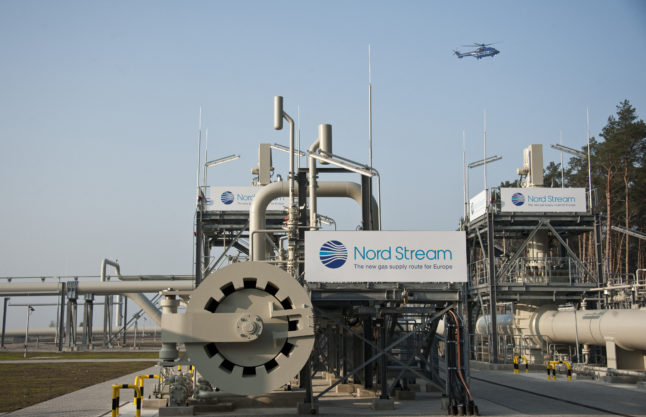“There are two leaks on the Swedish side and two leaks on the Danish side,” a Swedish Coast Guard official said, after three leaks were confirmed earlier this week on the Nord Stream pipelines in the Baltic Sea.
The official added that the two leaks on the Swedish side are “close to each other”.
The Swedish coast guard could not immediately say why the latest leak only appeared days after the initial breaches.
Media reported that the latest leak was detected at the Nord Stream 2 pipeline, but the coast guard did not confirm this.
Sweden had previously reported a leak on the Nord Stream 1 pipeline northeast of Bornholm, while Denmark has confirmed a leak on Nord Stream 2 to the southeast of the island, and another to the northeast above Nord Stream 1.
The vast leaks cause significant bubbling at the surface of the sea several hundred metres wide, making it impossible to immediately inspect the structures.
Suspicions of sabotage emerged after the leaks were detected. Moscow denied it was behind the explosions, as did the United States, saying Moscow’s suggestion it would damage the pipeline was “ridiculous”.
The UN Security Council will meet Friday to discuss the incident.
The Nord Stream 1 and 2 pipelines, which link Russia to Germany, have been at the centre of geopolitical tensions in recent months as Russia cut gas supplies to Europe in suspected retaliation against Western sanctions following Moscow’s invasion of Ukraine.
While the pipelines — operated by a consortium majority-owned by Russian gas giant Gazprom — are not currently in operation, they both still contained gas.
On Thursday, NATO declared that the damage was “the result of deliberate, reckless and irresponsible acts of sabotage”.
“These leaks are causing risks to shipping and substantial environmental damage,” the Western military alliance said in a statement.
Danish officials said on Wednesday – prior to the discovery of the fourth leak – that more than half of the gas in the Nord Stream pipelines in the Baltic Sea had leaked into the atmosphere after they were damaged.
“A clear majority of the gas has already come out of the pipes,” the head of the Danish Energy Agency, Kristoffer Böttzauw, told a press conference.
“We expect the rest to escape by Sunday,” he added.
Defence Minister Morten Bødskov said Wednesday morning that, due to pressure of the gas leaking out, it would take “one or two weeks” before inspections of the damaged structures could begin.
Fatih Birol, executive director of the International Energy Agency (IEA), said at a symposium in Paris that to him it was “very obvious” who was behind the leaks.
He said natural gas shortages in the wake of the war in Ukraine could make for a tough winter in Europe.
“In the absence of a major negative surprise, I think Europe, in terms of natural gas, can survive this winter with a lot of bruises in our bodies in terms of prices, economy and social issues, but we can go through that,” Birol said.
READ ALSO:



 Please whitelist us to continue reading.
Please whitelist us to continue reading.
Member comments